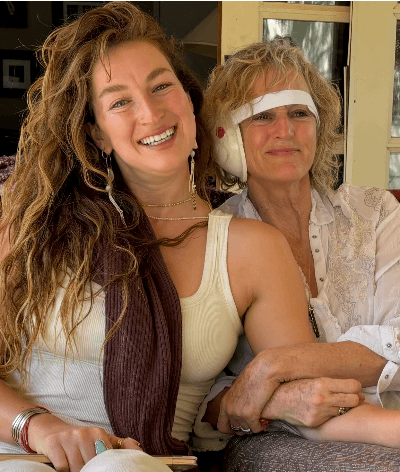My Cochlear Implant Journey (Part 2): Surgery and Activation
My Cochlear Implant Journey (Part 2): Surgery and Activation
By Julie Hayes-Nadler

One day post surgery…let the healing begin
In my last post here, I shared how the months following cochlear implant surgery were a mix of
gratitude for what I had regained and grief for what I could never get back. I wrote about the
hope I felt waking up from surgery and the challenges that lingered despite “success.” Now, I
want to take you inside the day-to-day reality—what it’s really like to live, listen, and adapt to a
brand-new way of hearing.
Surgery and Activation
My surgery was in November 2024. It could not have gone more smoothly—I was in and out of
the hospital in about five hours, and I healed without ever needing pain medication. At my
one-week follow-up, my incision looked so good that my doctor cleared me for activation of the
implant.
One week later that activation day was surreal. I went from total deafness to hearing distorted,
cartoonish voices (Alvin the Chipmunk to be exact). Much of speech was garbled but sound was
there. I had hope and got to work on my hearing rehab which I engaged in for many hours every
day. Two weeks later, during my first “mapping,” my husband’s voice began sounding like him
again, and speech became far more understandable.
Soon after, I returned part time to work in my nutrition practice via telehealth. My hearing wasn’t
perfect, but I was getting important pieces of my life back, day by day, only one month out from
surgery.
The Numbers vs. The Real World
At five months post-surgery, I had my first hearing test and was stunned: in a soundproof booth,
I scored 92% word recognition. A stellar result, yes! Yet, life isn’t lived in a padded booth.
In the real world I still struggle, greatly at times. I do best in ideal conditions: one-on-one
conversations, quiet spaces, good lighting, someone facing me and close by. In those settings, I
can and do connect deeply, and I’m grateful. Life however is a bit more complicated and messy.
Cars pass by. Dogs bark. Someone turns away mid-sentence. The reality is that even with this
amazing technology engaged and working well, I’m often left guessing.
In all honesty this has surprised me. I guess I thought if the implant was successful I would be
finished with constantly explaining my needs or negotiating for access. But the truth is, the work
of advocating for myself hasn’t gone away—it’s just become part of who I am. In my next post,
I’ll share more about how I’m learning to live with that truth.
Stay tune for Part 3!
See Part I here
See Part 2 here